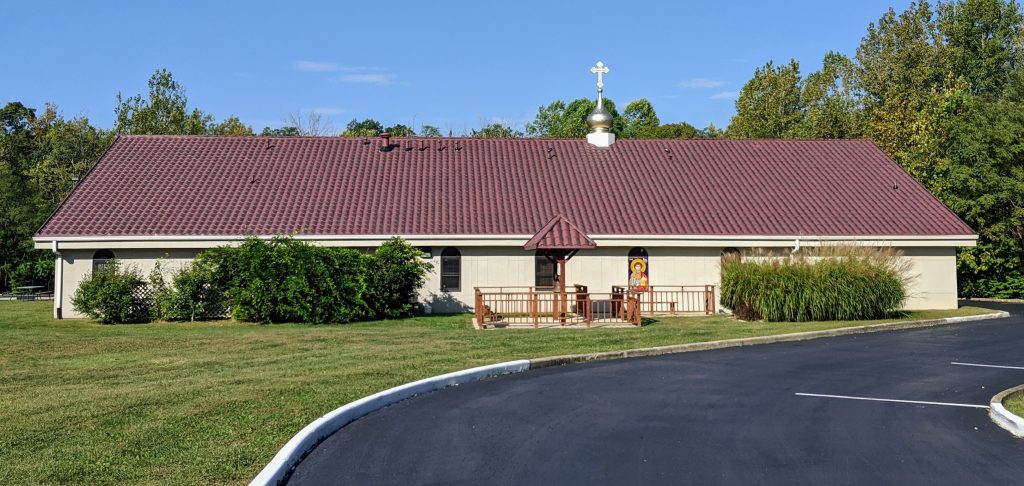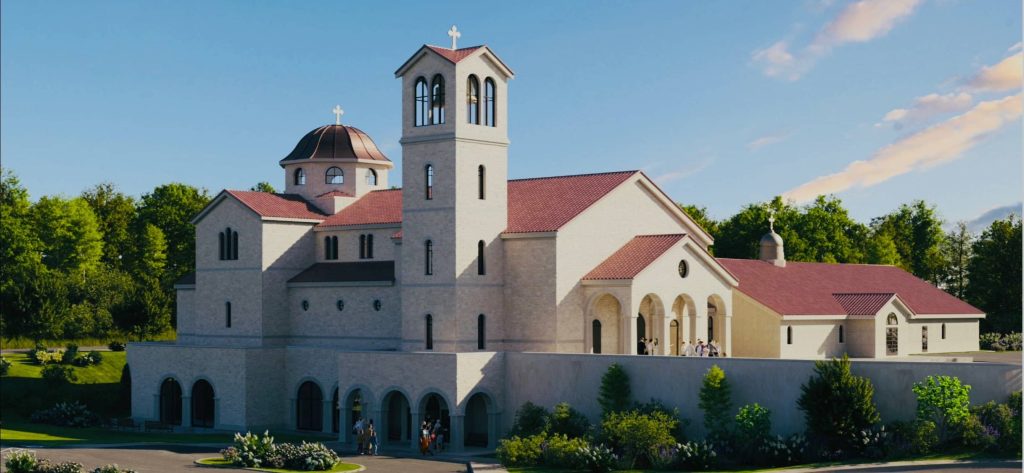
St. Marcian of Constantinople (5th c), when asked why he spent so much of his wealth on churches, replied: “If I had a daughter and was giving her in marriage to some nobleman, would I not expend much gold to adorn her as a worthy bride? Here, I am adorning the Church, the Bride of Christ.”
Since it’s early years as a praying community, All Saints has moved from worshipping in borrowed spaces. We moved from a converted house church on Smith Road to our 24-acre property on South Fairfax Road.
Our current building was constructed in 2002 with the intention that it would serve as a fellowship hall and classroom space once a permanent temple could be constructed. In 2017, a second parking lot was added, and the nave was expanded to accommodate another 60 souls.
By God’s grace, the church is filled to the brim, and we are currently in the blueprinting phase of our new temple construction project. It is our hope and intention that, when completed, the temple will shine brightly as a city upon a hill — a 3-dimensional icon of the Kingdom of God in the world, drawing people to Christ and His Holy Church.

One person we have consulted along our journey to build is Orthodox building designer Andrew Gould. One parishioner asked him: “Would you mind telling us a little bit of your philosophy on why we need beautiful churches?” His answer follows:
The question of ‘why this sort of architecture?’ really brings me back to why I started becoming interested in Orthodoxy. I had previously been Anglican and I was interested in designing Anglican churches in gothic style; when I was in college, I studied gothic architecture quite intensively. But as I started to learn about Orthodoxy and Byzantine churches, I was really impressed by the degree to which architecture, iconography, music, and liturgy are integrated in Orthodoxy, as one common vision. The way the liturgical movements connect to the different spaces of the building, and then the way the liturgical movements address the different icons, the way in which the icons are painted on the particular surfaces of the buildings in the proper order where they go, and then the way the hymnography refers to all of these saints and to liturgical actions. All of these things work together as an icon of the Kingdom of God in its entirety. Panel icons of saints are not the whole story. They represent the saints, the angels, Christ—but the Kingdom of God is a lot more than that.
If you read the end of the Book of Revelation it describes the Kingdom of God. The Kingdom of God is the City of New Jerusalem: it has foundations made of precious stones; it has columns and arches and beautiful pavements; it has domes—all of this is described. And it has ever been the practice of the Orthodox Church to understand church architecture as iconographic. That it, along with the icons and saints, makes for the full representation of the Kingdom of God, and then that must be filled with liturgy, music, incense, to represent we who make up the Kingdom of God along with the saints and angels worshipping God therein…
That’s why you need beautiful architecture. And that’s why the architecture needs to be honest, and solid and sincere. We don’t want to have a stage set, we don’t want to have a building that superficially looks like an Orthodox church, because that’s a stage set, that’s sort of what Baroque architecture is. That’s sort of trying to use plaster and ornament to give a theatrical impression of the Beatific Vision. But Orthodoxy’s not about that, Orthodoxy’s about building something absolutely solid, and permanent and honest that conveys the real ethos of the eternal Kingdom of God.
